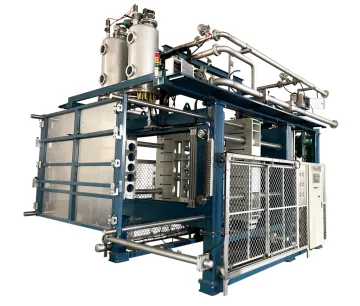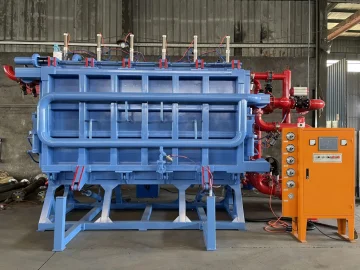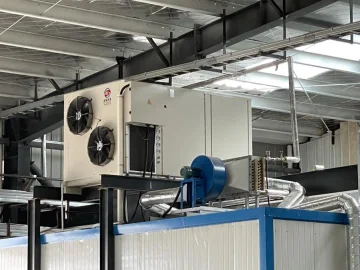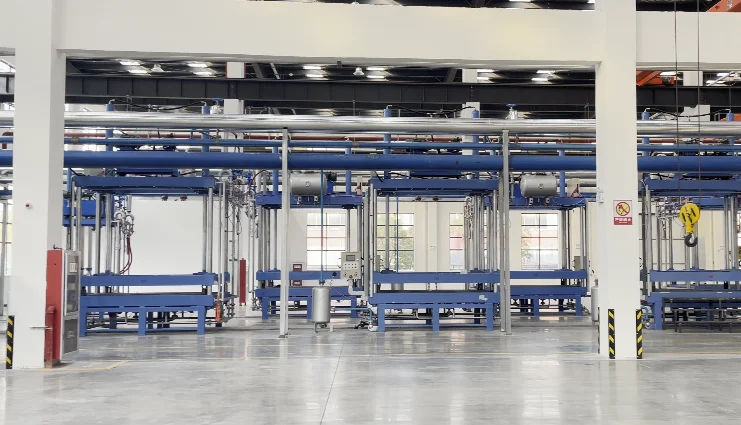The Lost Foam casting technique is a remarkably effective approach for crafting intricate metal components with superb precision in dimensions. It entails forming a disposable foam model, covering it with heat-resistant material, and subsequently substituting it with liquid metal. The triumph of this method relies greatly on the caliber of foam particles utilized to shape the model. Consequently, EPS pre-expander machines become an essential element in Lost Foam production.

What is the Lost Foam Process?
Lost Foam casting employs expanded polystyrene (EPS) or similar frothy substances to fashion a model that molten metal will ultimately displace. First, the foam model receives a coating of heat-resistant material to preserve its form and sturdiness. Then, it’s positioned within a sandy mold box. When molten metal flows into the mold, it turns the foam into vapor, resulting in an accurate casting. The excellence and uniformity of the foam particles directly influence the precision, durability, and surface smoothness of the finished metal piece.
Why EPS Pre-Expander Machines are Critical for Quality Foam Beads
EPS pre-expander machines hold a pivotal position in managing how polystyrene particles swell to reach the preferred thickness and regularity. Well-expanded particles promote seamless molding and reduce flaws. Plus, they boost the strength-related traits of the final foam model. Without meticulous oversight of particle growth, unevenness in the foam’s framework might cause casting imperfections. This could also increase waste of resources and slow down manufacturing efficiency.
Key Components of an EPS Pre-Expander Machine
An EPS pre-expander machine usually comprises several vital parts. These include a feeder for raw materials, a warming compartment, an expansion vessel, a drying setup, and a computerized control panel. Such machines apply steam or electromagnetic warmth to enlarge EPS beads. After that, they use regulated drying and sifting to guarantee consistent particle size and quality. Sophisticated versions feature PLC (Programmable Logic Controller) setups for exact adjustment of settings and automatic fine-tuning.
How EPS Pre-Expander Machines Work: A Step-by-Step Breakdown
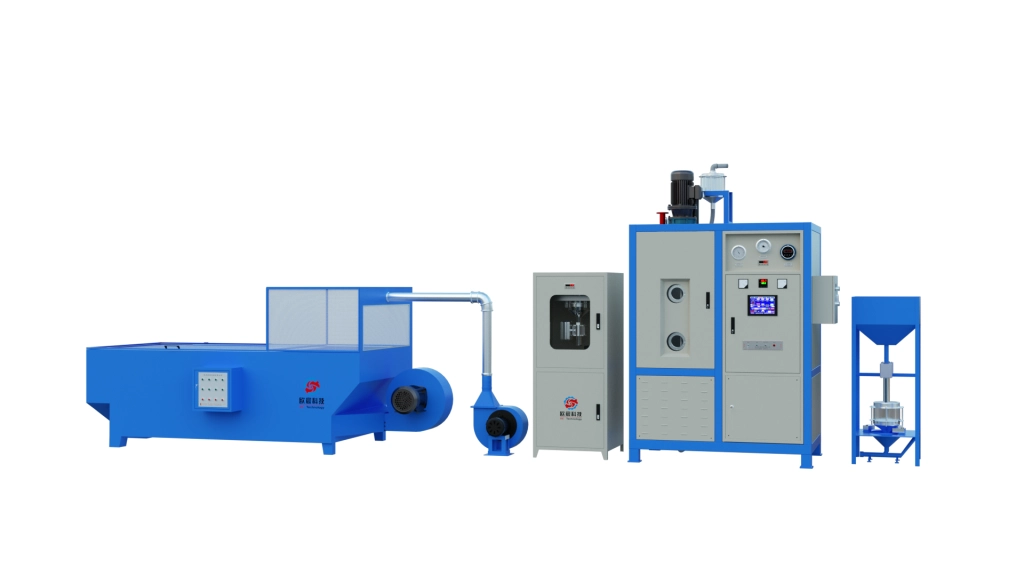
Stage 1: Raw Material Preparation (EPS, FD, Copolymer)
Before swelling begins, the raw substances—like EPS beads, flame-resistant additives (FD), and copolymers—are thoughtfully chosen and readied. The particles must lack impurities and maintain a steady size for even growth. Next, these materials get loaded into the EPS pre-expander machine. There, they experience an initial warming step to gear up for controlled expansion.
Stage 2: Electromagnetic & Steam Hybrid Foaming Process
Contemporary EPS pre-expanders use both electromagnetic and steam heating to finely regulate the swelling of foam particles. This blended method ensures steady warmth, lowering the chances of excessive heat or insufficient expansion. The electromagnetic part delivers uniform heat spread, while steam softens the polystyrene structure evenly. As a result, this technique yields particles of consistent size with few imperfections.
Stage 3: PLC Automation for Precision Control
PLC automation enables producers to tweak and set expansion factors like heat, pressure, and particle thickness with great accuracy. This setup guarantees uniformity across manufacturing batches. Additionally, it cuts down on mistakes made by humans. Operators can save various settings for different substances, which allows swift shifts between production cycles while upholding quality benchmarks.
Stage 4: Fluidized Bed Screening & Maturation
Once expanded, the particles move into a fluidized bed sifting system. Here, extra dampness gets removed, and particles are sorted by size. Proper drying is crucial to avoid clumping or “dead beads” that might disrupt mold filling. Then, the maturation phase lets particles settle in size and thickness before mold creation. This ensures top-notch performance in the Lost Foam casting method.
Technical Innovations in Modern EPS Pre-Expander Machines
Electromagnetic Heating vs. Traditional Steam Methods
Older EPS pre-expanders depended entirely on steam for particle swelling. However, newer designs include electromagnetic heating for better efficiency. Electromagnetic warmth offers steady and focused heat distribution, cutting energy use and ensuring reliable expansion. Moreover, this advancement reduces strain on the particles, leading to enhanced consistency and less waste of materials.
Avoiding “Dead Beads” with Dry, Water-Free Foaming Chambers
A key hurdle in EPS pre-expansion is the creation of “dead beads”—particles that expand poorly and hinder mold filling. Cutting-edge machines feature dry, water-free foaming areas that eliminate dampness-related irregularities. This structure fosters steadier particle growth and superior results in Lost Foam uses.
Electronic Weighing Systems for ±1g Accuracy
Exactness in particle thickness is vital for keeping casting precision. Modern EPS pre-expanders come with electronic weighing setups that control density within a ±1g range. This tight precision ensures every batch meets strict quality levels, reducing resource waste and enhancing casting results.
Leakage & Power-Outage Protection Features
To boost safety and dependability in operation, advanced EPS pre-expanders include leak detection systems and power-cut safeguards. These protections stop material loss and equipment harm. They also prevent production halts, making the machines more effective and trustworthy in factory settings.
Why China Leads in EPS Pre-Expander Machine Manufacturing
Cost-Effective Wholesale Solutions from Chinese Factories
China has risen as a top player globally in EPS pre-expander production, providing budget-friendly options without skimping on quality. Producers gain from large-scale operations, cutting-edge automation, and rigorous quality checks. Thus, wholesale EPS pre-expanders from China EPS pre-expander machine factories stand out as highly competitive worldwide.
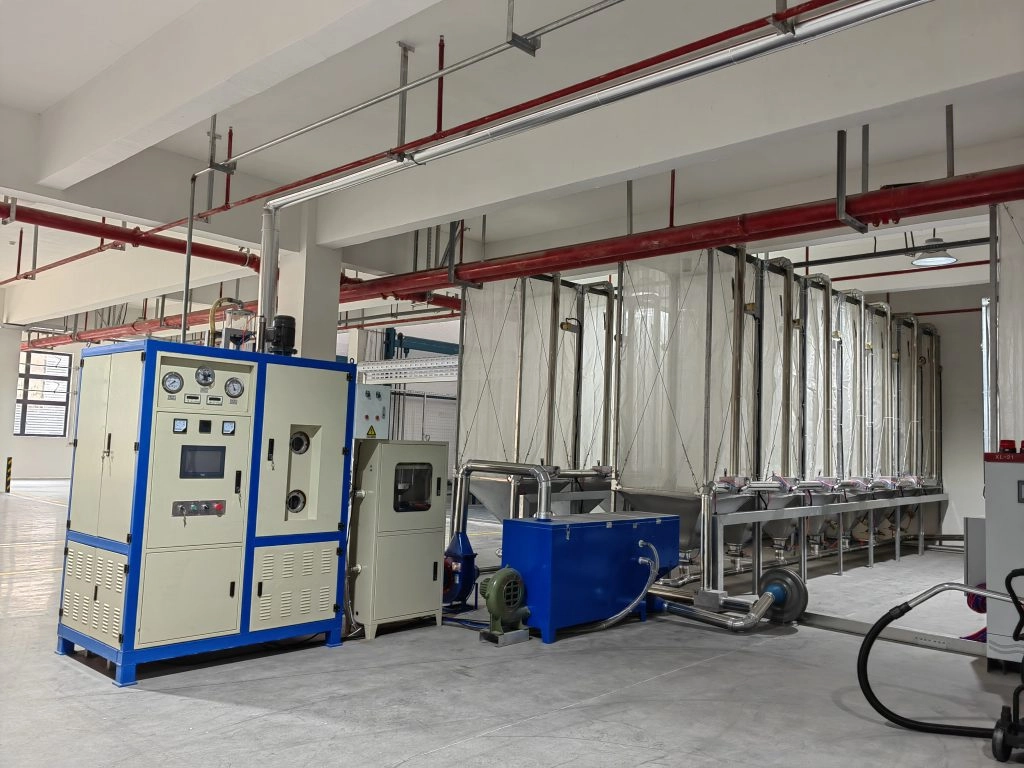
Advanced Automation in Hangzhou Ouchen Technology’s Machines
Hangzhou Ouchen Technology excels in premium EPS pre-expander machines fitted with top-tier automation and precise controls. Their devices blend PLC-guided hybrid foaming tech, dry barrel setups, and remote troubleshooting features. This ensures efficiency, reliability, and minimal resource waste in Lost Foam tasks.
Customization Services for Unique Production Needs
For producers with distinct needs, Hangzhou Ouchen Technology provides tailored EPS pre-expanders designed for specific uses. These machines offer adjustable foaming settings, unique heating layouts, and live monitoring systems to suit varied industrial demands.
Optimizing Your Lost Foam Process with EPS Pre-Expanders
How to Reduce Material Waste with Precise Parameter Storage
Fine-tuning and saving settings for repeated use can notably cut resource waste. EPS pre-expanders with advanced memory options help producers keep consistency across manufacturing cycles. This improves efficiency and cost savings.
Maintaining Consistent Bead Quality Across Shifts
Steady particle expansion is key for top-notch Lost Foam casting. Automated pre-expanders ensure uniform particle thickness and size, reducing differences between batches. Routine upkeep and calibration further boost performance and trustworthiness.
Troubleshooting Common Issues (e.g., Agglomeration, Temperature Fluctuations)
Frequent problems like particle clumping and heat swings can be fixed with exact control settings and regular equipment checks. Proper handling of materials helps too. Advanced EPS pre-expanders feature real-time tracking systems that spot and tweak settings automatically. This lowers flaws and raises success rates.
FAQs About EPS Pre-Expander Machines
What makes Chinese EPS pre-expander machines cost-effective?
Cutting-edge automation and mass production lower expenses while preserving accuracy and quality.
How does electromagnetic heating improve foam quality?
It maintains steady barrel warmth, cutting dampness-related flaws and ensuring even swelling.
Can these machines handle different materials like FD or copolymer?
Yes, modern units support multi-material pre-expansion with adjustable settings.
What safety features do EPS pre-expanders include?
Leak protection, power-cut safeguards, and compressed-air cooling setups ensure safe operation.
Ready to Upgrade Your lost Foam Molds Production?
Boost efficiency in your Lost Foam process with Hangzhou Ouchen Technology’s innovative EPS pre-expander machines. Reach out Hangzhou Ouchen Technology today to explore tailoring options or request a demo. Let’s revolutionize your foam production with precise engineering!

